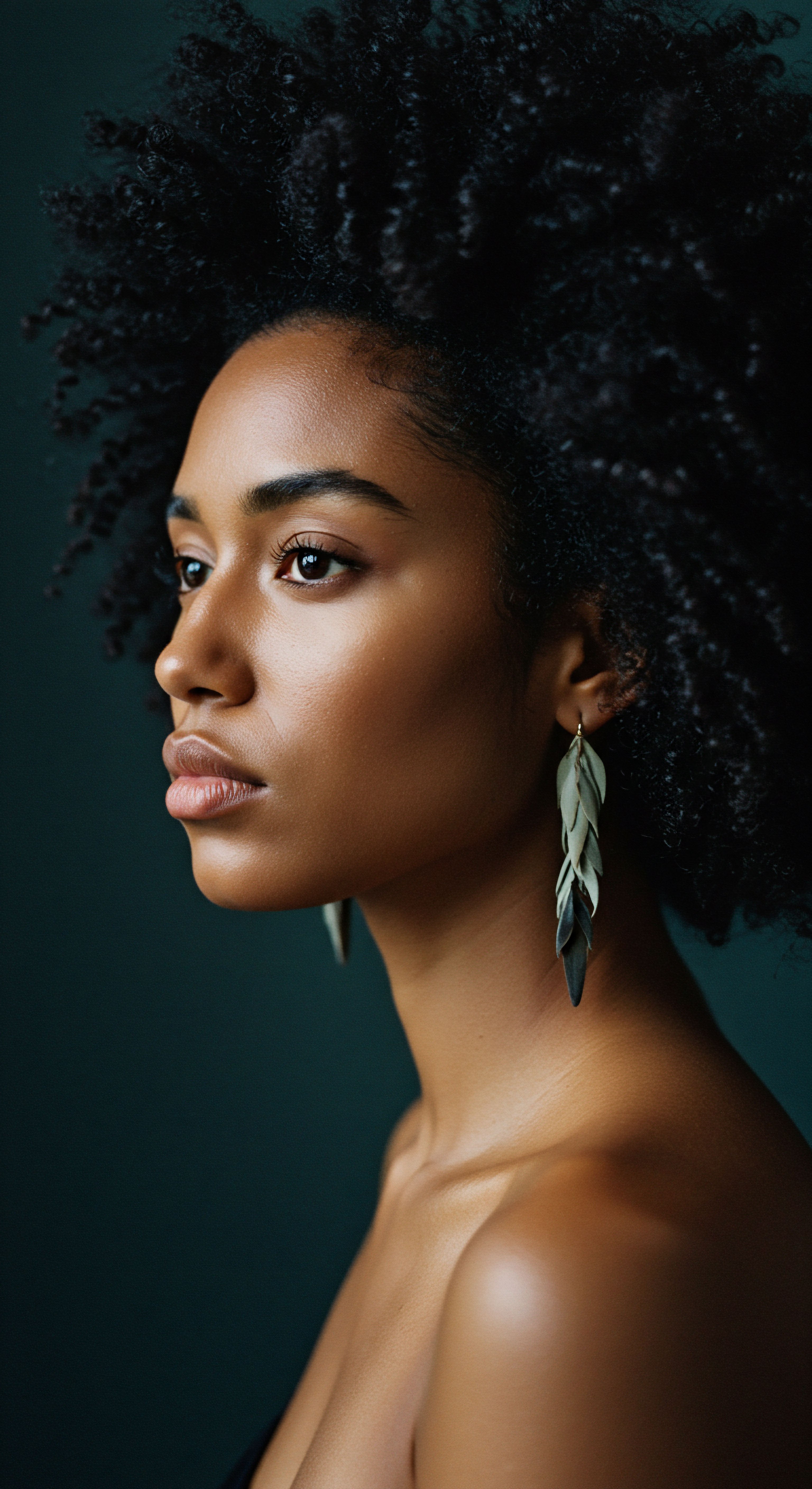
Roots
The quiet rustle of leaves, the deep comfort of earth beneath our feet, the gentle, persistent rhythm of life—these sensations hold a particular resonance when contemplating the strands that crown our heads. For many, particularly those with hair of distinct curl and coil, the relationship with their natural texture runs far deeper than mere aesthetics. It touches the very bedrock of self-perception, whispering tales of heritage, societal gaze, and personal truth.
The psychological impact of choosing to present one’s hair in its authentic, unadorned state is not a simple matter of preference; it is a complex unfolding, a series of internal and external shifts that recalibrate one’s sense of belonging and worth. This exploration begins by acknowledging the profound historical and cultural currents that have shaped the very definitions of beauty and acceptability for textured hair, revealing how these external pressures have long imprinted upon the inner landscape of individuals.

What Constitutes Textured Hair
Textured hair, often called afro-textured or kinky-coily hair, possesses a unique helical structure, unlike straight or wavy hair. This distinctive shape results from the elliptical cross-section of the hair shaft and the way keratin proteins arrange themselves within the cortex. The tight curls and bends create points of weakness along the strand, making it more prone to dryness and breakage. This inherent characteristic necessitates specific care practices and a deep understanding of its unique biology.
The density of follicles on the scalp, often higher in individuals with textured hair, contributes to the appearance of volume and fullness, even when individual strands are fine. Understanding these fundamental aspects moves us beyond superficial descriptions, offering a scientific lens through which to appreciate the physical qualities that make textured hair distinct.
Each curl, each wave, each kink possesses its own story, its own particular way of absorbing moisture, reflecting light, and responding to environmental cues. The classification systems, from the well-known Andre Walker Typing System to more nuanced approaches, serve as guides, not rigid definitions. They help individuals pinpoint general characteristics, assisting in product selection and styling approaches. Yet, the lived experience of textured hair transcends any numerical categorization, for it is as varied and singular as the individuals who wear it.

The Architecture of a Strand
To truly appreciate the psychological shift in embracing natural texture, one must first peer into the microscopic world of the hair strand itself. Each hair shaft is a marvel of biological design, comprising three primary layers ❉ the cuticle, cortex, and medulla. The outermost layer, the Cuticle, consists of overlapping, scale-like cells that protect the inner structures.
In textured hair, these cuticular scales tend to lift more, contributing to a higher porosity and a tendency for moisture to escape. This physical characteristic often leads to the perception of dryness, even when the hair is adequately hydrated.
Beneath the cuticle lies the Cortex, the thickest layer, which holds the melanin responsible for hair color and the keratin proteins that provide strength and elasticity. The specific arrangement and disulfide bonds within the cortex dictate the curl pattern. Finally, the innermost layer, the Medulla, a soft, often discontinuous core, may or may not be present depending on the hair type and thickness.
The inherent twists and turns of textured hair mean that natural oils produced by the scalp, known as sebum, struggle to travel down the hair shaft, leaving the ends particularly vulnerable to dryness. This anatomical reality shapes daily care rituals and contributes to the hair’s overall disposition.
The intrinsic structure of textured hair, with its unique helical shape and lifted cuticle, directly impacts its moisture retention and strength, dictating specialized care.
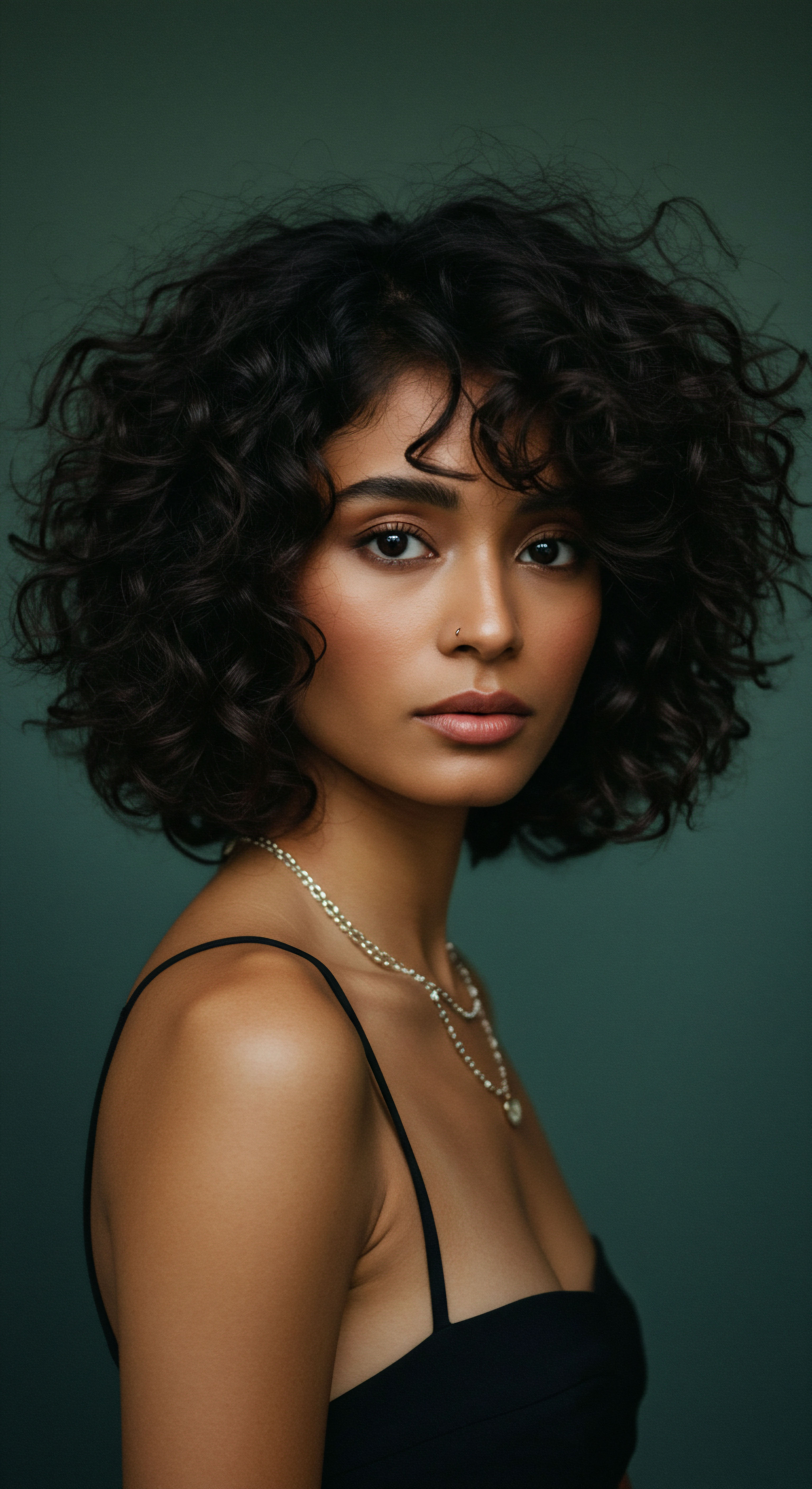
Language and the Perception of Hair
The words we use to describe textured hair carry significant weight, reflecting centuries of cultural conditioning and societal biases. Terms like “kinky,” “coily,” “curly,” and “wavy” are now being reclaimed and celebrated within the natural hair community. However, historical lexicons often associated natural textures with negative connotations ❉ “unruly,” “nappy,” “unprofessional.” These terms, often used in dismissive or demeaning ways, imprinted upon the collective psyche, fostering feelings of inadequacy and a desire to alter one’s natural state.
The psychological journey toward embracing natural hair frequently involves an active unlearning of these ingrained negative associations and a conscious adoption of affirming language. This linguistic shift is a powerful act of self-definition, moving away from imposed standards and towards a personal truth.
Consider the shift from viewing a tightly coiled strand as “difficult” to recognizing its resilience and unique sculptural quality. This change in perspective, mirrored in the language chosen, can transform a source of anxiety into a source of pride. The discourse surrounding hair is not merely descriptive; it is prescriptive, shaping perceptions, dictating norms, and influencing the internal monologue of individuals navigating their identity in a world often predisposed to Eurocentric beauty ideals.

Ritual
Stepping into the realm of daily hair practices reveals a world where care transcends mere function. For those with textured hair, these actions often transform into thoughtful rituals, each step a gentle conversation with the strands, a practice of presence and mindful attention. This section delves into the purposeful techniques and tools that not only maintain the health and beauty of textured hair but also serve as conduits for self-expression and connection. It is within these regular interactions that the deeper psychological shifts of acceptance and self-discovery begin to unfold, moving beyond the foundational understanding of hair anatomy to the practical wisdom of its daily tending.

Styling as a Form of Self-Expression
The myriad styling possibilities available for textured hair are not merely aesthetic choices; they represent a powerful avenue for personal expression and cultural affirmation. From intricate braids that whisper ancestral stories to voluminous afros that declare a modern presence, each style carries meaning. The act of choosing a style, of learning the techniques required, and of wearing it with confidence contributes significantly to one’s psychological well-being. This deliberate selection can foster a sense of autonomy and creative agency, allowing individuals to sculpt their external presentation in alignment with their inner identity.
Consider the profound shift from feeling compelled to straighten hair to fit a societal mold, to feeling liberated to wear coils in their natural glory. This change is not simply about a hairstyle; it is about reclaiming personal narrative. The exploration of different protective styles, such as cornrows, twists, and locs, often leads to a deeper appreciation for the hair’s versatility and its ability to shield delicate strands from environmental stressors. These styles, historically and culturally significant, offer a tangible link to heritage, providing comfort and a sense of belonging.
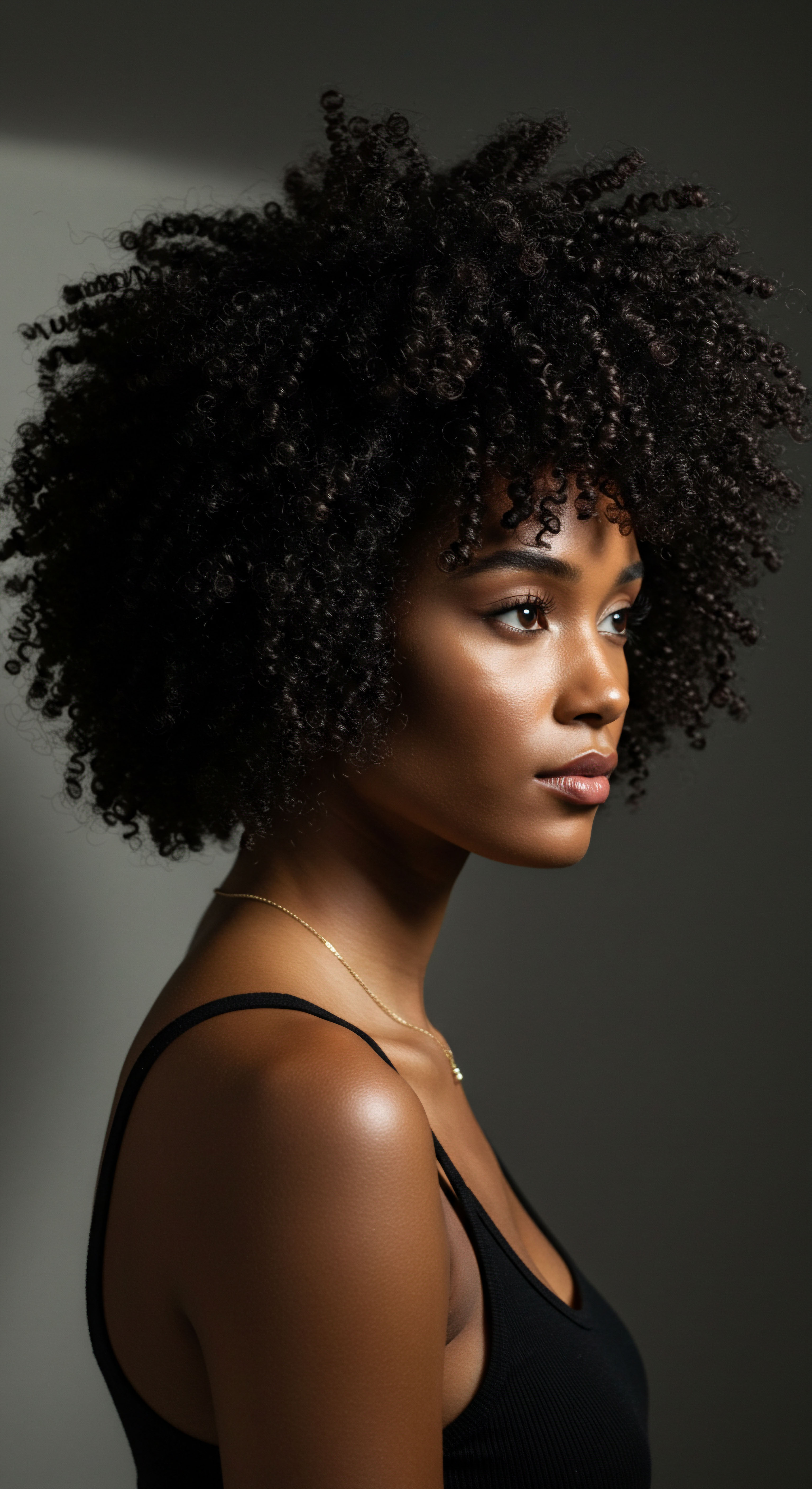
Techniques for Definition and Preservation
Achieving definition and maintaining the health of textured hair involves specific techniques, each contributing to the hair’s overall vitality and appearance. These methods, refined over generations, address the unique needs of coily strands, minimizing breakage and maximizing moisture retention.
- Wash and Go ❉ This technique involves cleansing, conditioning, and applying styling products to wet hair, allowing the natural curl pattern to set as it dries. It requires understanding the hair’s specific hydration needs and selecting products that offer definition without stiffness.
- Twist-Outs and Braid-Outs ❉ These styles involve sectioning damp hair, applying products, twisting or braiding the sections, and allowing them to dry before unraveling. The result is elongated, defined curls, offering a softer, less compact look than a wash and go.
- Finger Coiling ❉ A precise method where individual strands or small sections are coiled around a finger to create distinct, uniform curls. This technique is often used for enhancing definition, particularly around the face.
The deliberate practice of these techniques cultivates patience and a heightened awareness of one’s hair. It is a process that builds a relationship, transforming what might once have been a source of frustration into an act of gentle care.
Daily hair practices, from thoughtful styling choices to precise techniques, transcend mere function, becoming meaningful rituals that affirm identity and nurture well-being.

The Role of Tools and Accessories
The right tools are not simply implements; they are extensions of a mindful approach to hair care. Wide-tooth combs, detangling brushes designed for textured strands, and microfiber towels that reduce friction are indispensable for minimizing damage during styling and cleansing. The selection of these items becomes a conscious choice, moving away from tools that might pull or break delicate strands towards those that respect the hair’s integrity.
Accessories, too, play a significant role. Satin or silk scarves and bonnets, often used for nighttime protection, are more than just practical items; they are symbols of care and preservation. They safeguard styled hair, prevent tangling, and maintain moisture, reflecting a deeper commitment to the hair’s long-term health. This conscious choice of tools and accessories reinforces the psychological connection to one’s hair, transforming routine actions into expressions of self-respect and intentional care.
| Tool Category Wide-Tooth Comb |
| Purpose Gentle detangling, minimizing breakage |
| Psychological Impact Reduces frustration, promotes patience |
| Tool Category Detangling Brush |
| Purpose Distributes product, aids in knot removal |
| Psychological Impact Lessens physical discomfort, builds confidence in handling hair |
| Tool Category Microfiber Towel |
| Purpose Reduces frizz and drying time with less friction |
| Psychological Impact Preserves hair health, enhances satisfaction with results |
| Tool Category Satin/Silk Bonnet |
| Purpose Protects hair overnight, retains moisture |
| Psychological Impact Fosters a sense of proactive care, peace of mind |

Heat and Hair
The application of heat to textured hair, whether for temporary straightening or thermal reconditioning, warrants a safety-first approach. While some choose to straighten their hair, understanding the potential for damage is paramount. High heat can permanently alter the hair’s protein structure, leading to loss of natural curl pattern, dryness, and breakage. A mindful approach involves using heat protectants, lower temperatures, and limiting frequency.
For some, the choice to straighten is a periodic expression, a different facet of their personal style, while for others, it represents a continuation of past conditioning. The psychological impact here lies in the balance between personal preference and the recognition of hair health.
The journey towards embracing natural hair often involves a gradual reduction in heat styling, allowing the hair to recover and its natural curl pattern to re-emerge. This process can be a profound act of liberation, shedding the expectation of conformity and welcoming the authentic texture. It is a conscious decision to prioritize the hair’s well-being over external pressures, reinforcing a deeper sense of self-acceptance.

Relay
The journey of embracing natural textured hair extends beyond the visible coils and careful routines; it delves into the intricate interplay of self, society, and history. This section explores the profound psychological impacts, examining how the decision to wear one’s hair in its authentic state influences identity, mental well-being, and social navigation. We consider the scientific underpinnings of self-perception and the powerful, sometimes subtle, ways in which cultural currents shape our inner worlds, revealing a complex narrative of resilience and liberation.

The Psychological Terrain of Natural Hair
For individuals with textured hair, particularly those of Black and mixed-race heritage, the act of choosing to wear natural hair is often laden with psychological weight. It can represent a significant departure from societal norms and inherited beauty standards that historically favored straight hair. This departure can lead to a cascade of internal experiences, from profound relief and affirmation to anxiety stemming from potential societal judgment.
The journey involves a redefinition of beauty, moving from external validation to an internal sense of worth tied to one’s authentic self. This shift requires a dismantling of internalized messages that may have equated natural hair with being “unkempt” or “unprofessional,” messages often absorbed from childhood.
The psychological impact manifests in various ways, influencing self-esteem, confidence, and a sense of belonging. The initial stages of this journey might involve feelings of vulnerability, as individuals present a version of themselves that may not align with dominant aesthetic expectations. Yet, as self-acceptance grows, so too does a deep-seated confidence. This personal transformation can spill into other areas of life, fostering greater authenticity in relationships and professional settings.

Societal Pressures and Internalized Bias
Despite growing awareness and the rise of the natural hair movement, societal biases against textured hair persist, particularly in professional and academic environments. These biases, often rooted in Eurocentric beauty ideals, can exert significant psychological pressure. The “Good Hair” study conducted by the Perception Institute in 2016 provided empirical evidence of this enduring bias.
It found that, on average, White Women Showed Explicit Bias toward Black Women’s Textured Hair, Rating It as Less Beautiful, Less Attractive, and Less Professional Than Smooth Hair. This finding illuminates a deeply ingrained societal preference that can lead to tangible disadvantages and considerable psychological strain for those with natural textures.
Such biases are not always overt; they can manifest as microaggressions, subtle comments, or unspoken expectations that compel individuals to conform. The psychological burden of constantly navigating these perceptions can contribute to heightened anxiety and chronic stress. Individuals may experience an internal conflict between personal expression and the perceived necessity to alter their appearance for acceptance or career advancement.
This tension can erode self-worth, making the decision to wear natural hair a statement of defiance as much as a personal preference. The very act of resistance against these norms can paradoxically strengthen one’s resolve and identity.
Embracing natural hair can prompt a powerful redefinition of beauty, moving from external validation to an authentic, internal sense of self-worth, despite persistent societal biases.
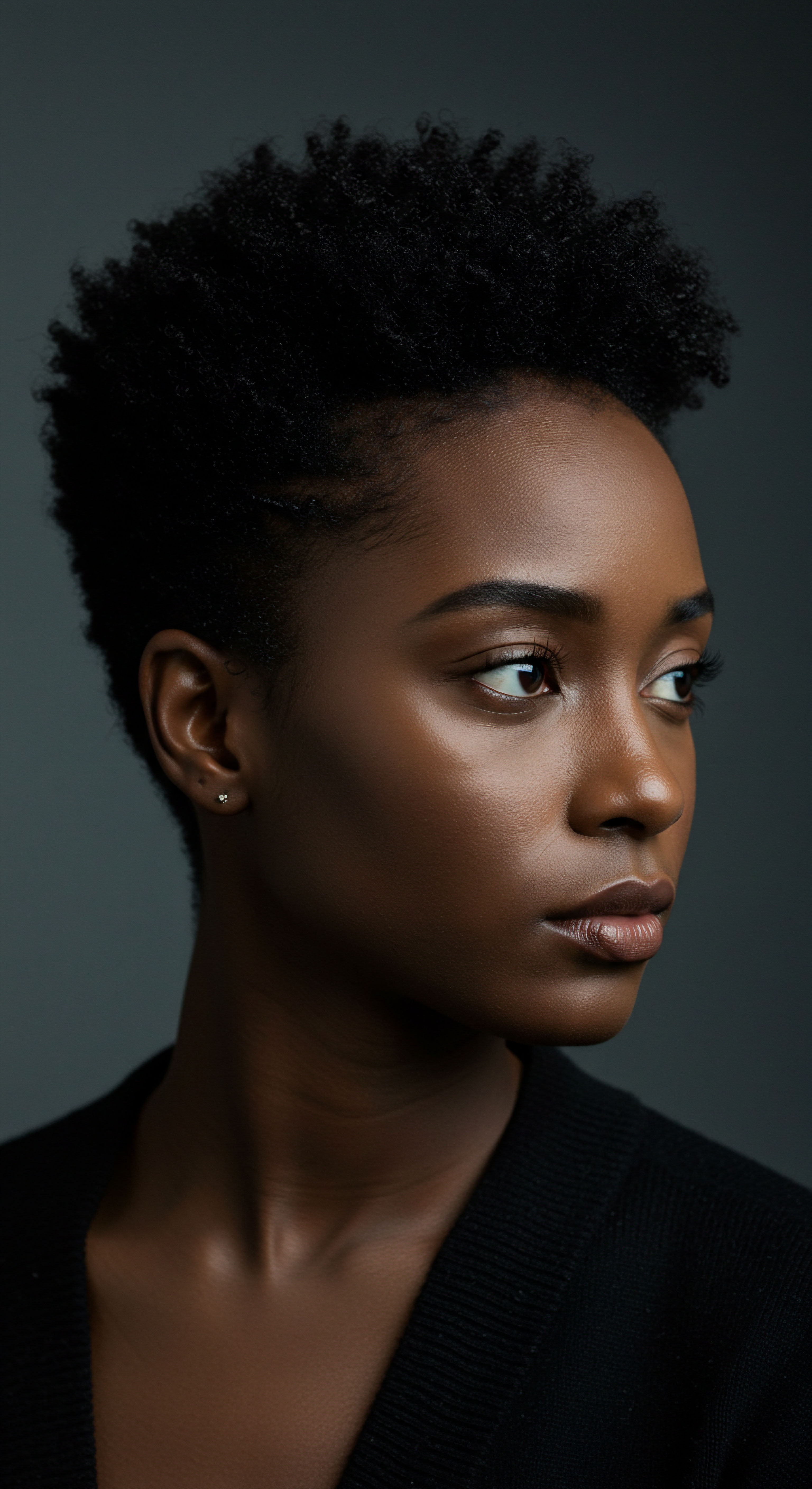
Identity and Well-Being
The connection between hair and identity is particularly strong for individuals of African descent, where hair has historically served as a symbol of status, community, and spiritual connection. The decision to wear natural hair is often a conscious reclamation of this heritage, a visible affirmation of cultural identity. This act can lead to a deeper sense of self-awareness and cultural pride, reinforcing a positive racial identity. Studies have indicated a positive correlation between a higher internal locus of control and the choice to wear natural hair, suggesting that individuals who embrace their natural texture may be less concerned with external perceptions.
The psychological benefits extend to mental well-being. For many, the natural hair journey is associated with reduced stress from chemical treatments, less time spent on styling, and a greater sense of authenticity. It can lead to a more harmonious relationship with one’s physical self, reducing feelings of alienation or dissatisfaction. The journey often becomes a personal act of liberation, fostering resilience and a profound connection to a collective history of strength and beauty.

The Impact on Self-Esteem and Confidence
The decision to transition to natural hair often involves a period of self-discovery, where individuals learn to care for their unique texture and navigate societal reactions. This process can significantly bolster self-esteem. As individuals gain proficiency in styling and maintaining their natural hair, a sense of accomplishment and mastery develops. This newfound competence can translate into increased confidence in other areas of life.
The ability to present one’s authentic self, unburdened by external pressures, becomes a powerful source of internal strength. This is not to say the journey is without its difficulties; indeed, challenges in finding suitable products, mastering new techniques, or facing criticism can test one’s resolve. However, overcoming these hurdles often solidifies the psychological gains.
The affirmation received from supportive communities, both online and offline, plays a vital role in reinforcing positive self-perception. Seeing others with similar hair textures celebrated and admired can counteract the negative messages absorbed from broader society, creating a powerful feedback loop that strengthens self-worth. This communal support transforms what might otherwise be a solitary struggle into a shared experience of empowerment.

Holistic Care and Mental Health
The psychological impact of embracing natural hair is inextricably linked to holistic care, which extends beyond mere product application to encompass overall well-being. The shift to natural hair often prompts a deeper inquiry into ingredients, leading to a more conscious approach to personal care. This awareness can reduce exposure to harsh chemicals found in many straightening products, which have been linked to various health concerns. The mental health benefits of this transition are also significant, as individuals shed the anxiety associated with conforming to unattainable beauty standards.
Nighttime rituals, such as wrapping hair in satin bonnets or scarves, become more than just protective measures; they are acts of self-care, a quiet acknowledgment of the hair’s value. This consistent, gentle care fosters a sense of respect for one’s physical self. Problem-solving for textured hair, whether it is addressing dryness or breakage, encourages a proactive and patient mindset, contributing to a sense of control and competence. The journey of embracing natural hair thus becomes a microcosm for broader self-acceptance, a testament to the profound connection between physical appearance and psychological health.
| Aspect of Well-Being Identity Affirmation |
| Description of Impact Strengthened sense of self, cultural connection, and authenticity. |
| Aspect of Well-Being Self-Esteem Boost |
| Description of Impact Increased confidence from overcoming challenges and internalizing positive self-perception. |
| Aspect of Well-Being Reduced Stress |
| Description of Impact Less anxiety from societal pressures to conform and fewer chemical treatments. |
| Aspect of Well-Being Personal Agency |
| Description of Impact Feeling of control over one's appearance and narrative. |

The Cultural Significance of Hair Practices
Across various cultures, hair has served as a powerful medium for conveying social status, marital state, tribal affiliation, and spiritual beliefs. For many of African descent, these traditions were disrupted by colonialism and slavery, where attempts were made to strip individuals of their cultural markers, including their hair. The re-emergence of natural hair styles in contemporary society is a powerful echo of these historical practices, a contemporary expression of cultural continuity and resistance. The psychological strength derived from this connection to ancestry is immense, providing a grounding force in a world that often seeks to homogenize identity.
The collective experience of the natural hair movement has created spaces for shared wisdom, mutual support, and communal celebration. These communities offer a buffer against external judgments, providing a validating environment where natural hair is not just accepted but revered. This sense of collective identity contributes significantly to individual psychological resilience, demonstrating that the personal act of embracing natural hair is also a powerful social and cultural statement.
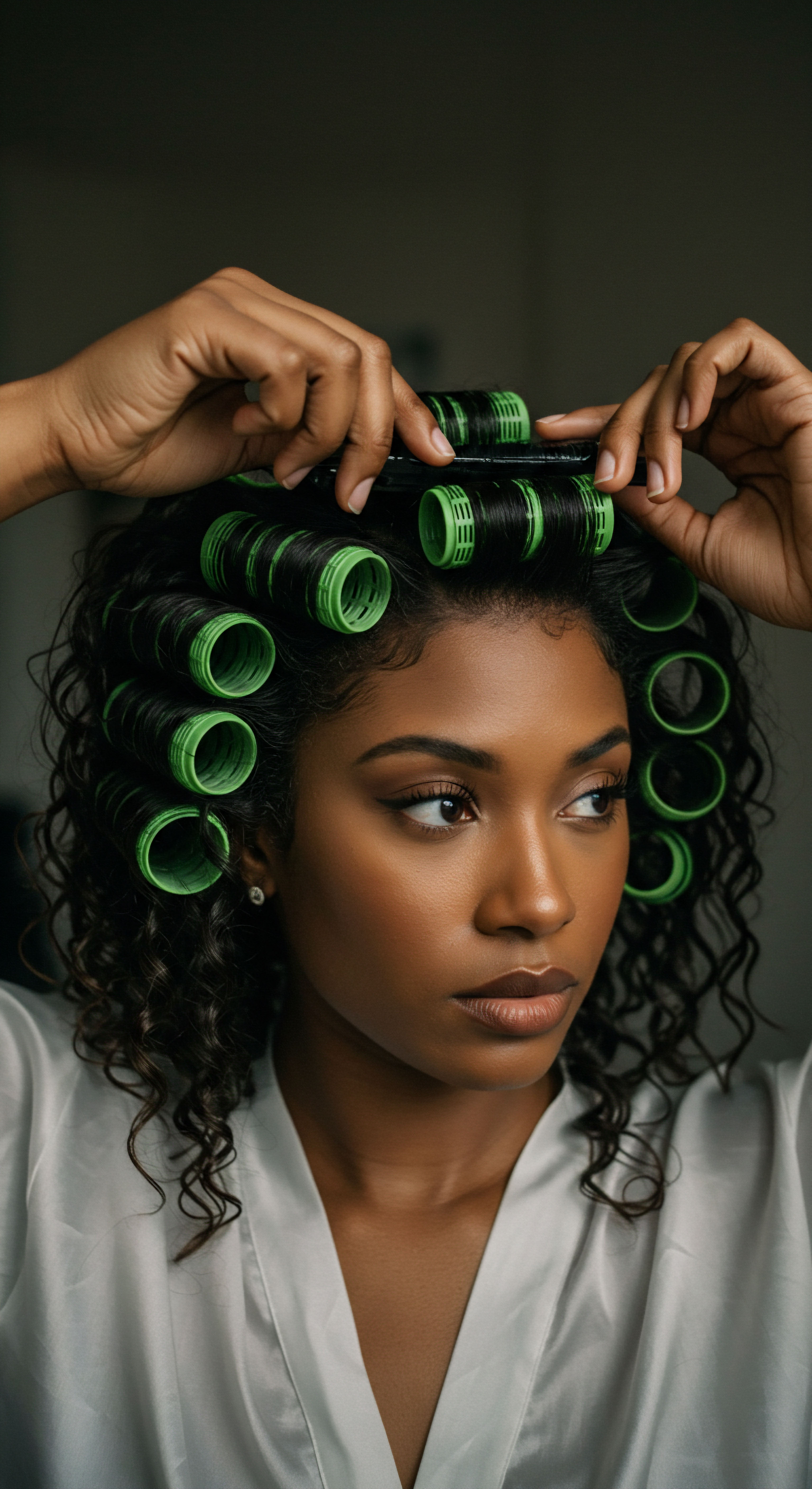
Reflection
The quiet revolution of embracing natural textured hair extends beyond mere personal preference; it charts a course through the complex terrain of identity, societal expectation, and individual well-being. This journey, often marked by moments of vulnerability and triumph, unveils a profound psychological liberation. It is a re-acquaintance with one’s authentic self, a gentle recalibration of beauty standards, and a powerful statement of cultural continuity.
As coils and curls unfurl, so too does a deeper understanding of self, fostering a resilient spirit and a serene acceptance of one’s inherent grace. The impact echoes far beyond the mirror, resonating through communities and shaping future generations with a legacy of pride and genuine connection.
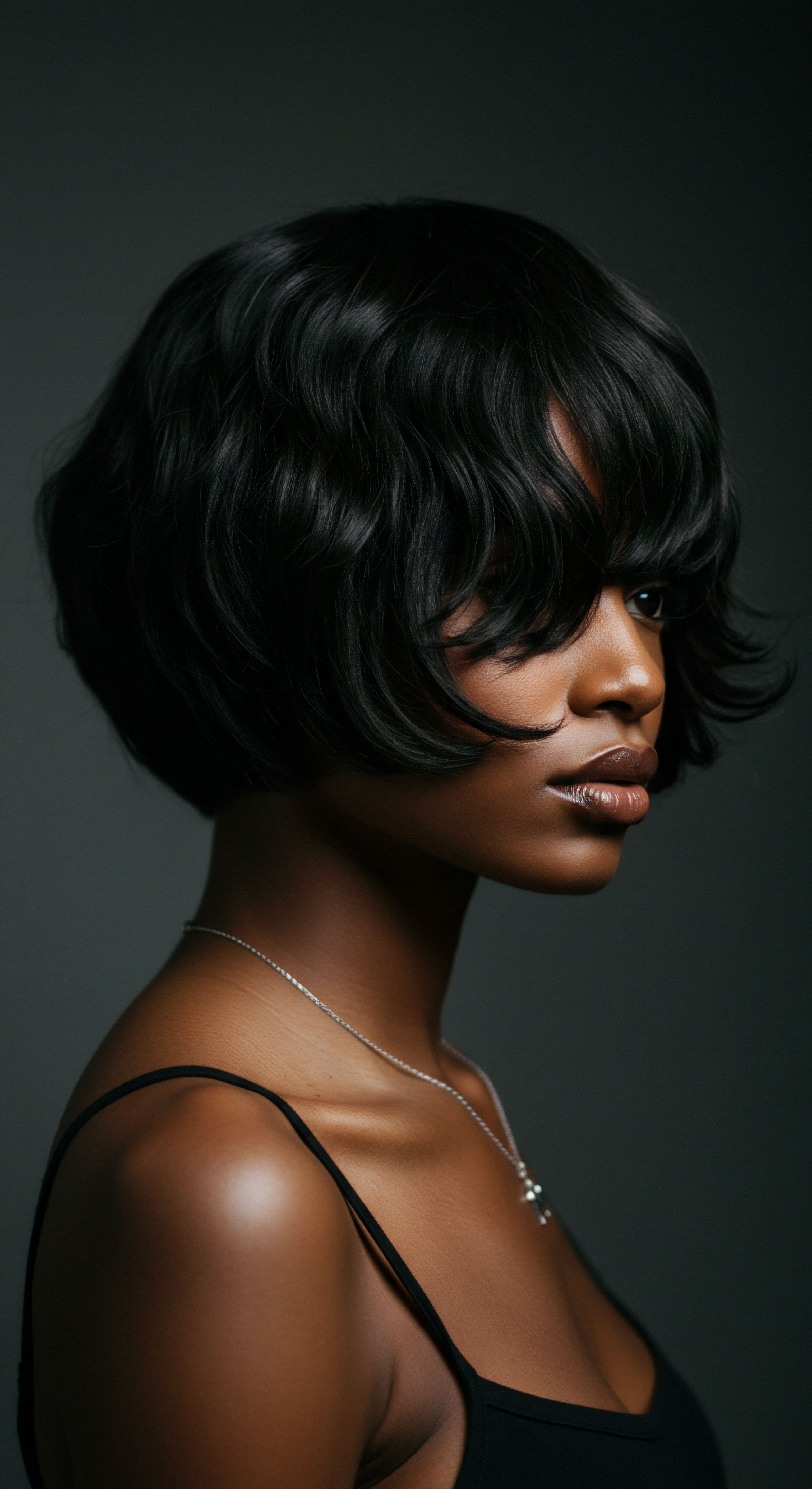
References
- Abrams, L. S. Belgrave, F. Z. Williams, D. R. & Maxwell, M. A. (2020). Hair, self-esteem, and racial identity in Black adolescent girls. Journal of Black Psychology.
- Bankhead, R. & Johnson, A. (2014). The relationship between hair-esteem and self-esteem among African American women. Journal of Black Studies.
- Byrd, A. D. & Tharps, L. D. (2001). Hair Story ❉ Untangling the Roots of Black Hair in America. St. Martin’s Press.
- Dove, C. (2021). Black women and hair ❉ A cultural psychology. Taylor & Francis.
- Ellis-Hervey, N. L. Doss, A. Davis, T. Nicks, R. & Araiza, X. (2016). African American personal presentation ❉ Psychology of hair and self-perception. Journal of Black Studies.
- Henderson, A. L. (2022). Textured hair and the Black female identity ❉ A systematic review. Journal of Black Psychology.
- Johnson, A. & Bankhead, R. (2014). The role of hair in the identity of Black people. Journal of Black Studies.
- Mbilishaka, A. M. Clemons, C. L. Hudlin, T. L. Warner, S. & Jones, A. L. (2020). Don’t get it twisted ❉ Untangling the psychology of hair discrimination within Black communities. American Journal of Orthopsychiatry.
- O’Brien-Richardson, P. (2019). Hair harassment ❉ An exploration of the impact of race-based hair discrimination on Black women and girls. Journal of Social Issues.
- Opie, L. & Phillips, K. (2015). Black women’s hair ❉ A sociological approach. Palgrave Macmillan.
- Perception Institute. (2016). The Good Hair Study.
- Robinson, P. (2011). Hair matters ❉ Beauty, power, and black women’s consciousness. Rutgers University Press.
- Sieber, R. F. & Herreman, F. (2000). Hair in African art and culture. The Museum for African Art.
- Thompson, C. (2009). Black women, beauty, and hair as a matter of being. Women’s Studies.